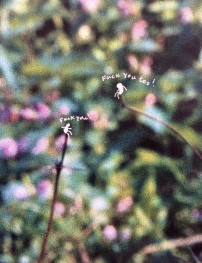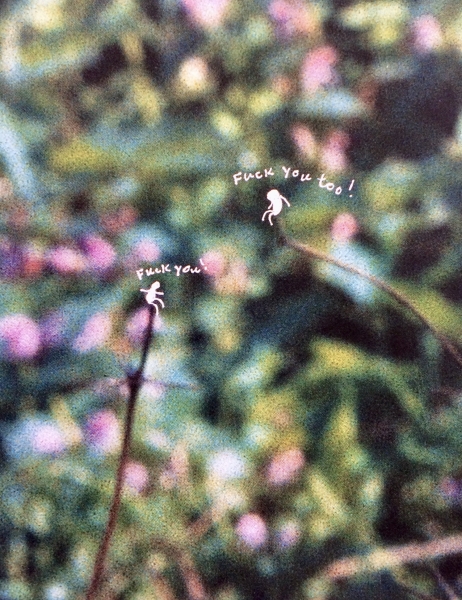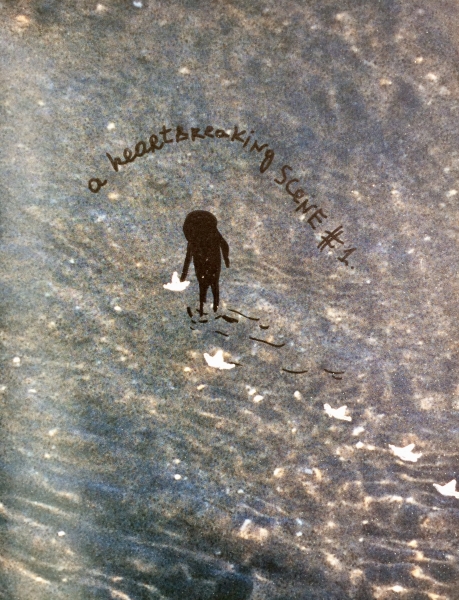Nature People is comprised of a set of seven photographs by Angel Tzvetanov who was specifically hired by the artist to present details of a landscape that fills the entire frame of the photograph. As if dealing with a conventional exhibition of landscape photography, Tzvetanov's photographs were deliberately exhibited by the curator without the artist's interference. After setting the exhibition up, the surface of these photographs was subsequently inscribed with drawings by the artist. Drawing is thus clearly implied with its context of motivation, accepting incident and contingency as ways of demystifying any considerations of pure immune anteriority. The drawings arise as a response to a precise motivation, but are never drained by this determination. The relation Solakov establishes with a photograph's detail is intense, subversive and witty. His attention to these details disengages them from their context. In fact, the small drawings, in their relation to the photograph's details, become detached from their whole, functioning like saboteurs who progressively undermine the entire image. Nature People presents two scales: a natural one comprised of the photographs and the dimension that the flora has been granted in them, and a microscopic scale, rendered by the minute drawings that have been inscribed on the photographs and can only be perceived by standing close-up. To behold the microscopic world that has been drawn on the photographs, one looses sight of the photographs, immersed in the image's detail, but to recover the photograph as a whole, we are obliged to release our selves from this 'invisible' myriad. This process, which is physically experienced by the observer, implies the viewer in the production of encounters with this minuscule and subversive universe. The observer's participation is instigated by a sign that founds a specific situation proposed by a drawing in relation to the context of the photographic image. This sign occupies the vanishing point or deterritorializes the image's order. A process similar to random and subjective association exists between the drawing and the photograph's detail. Animated by desire, a signifying chain flows and is drawn out. These drawings are quite unlike the graffiti scribbled on toilet doors which represent the pure manifestation of a libidinal pulse. The situations they refer to are other impasses, where the desire that animated and produced them is confronted with other realities, as if the escape they envisage were to constantly stumble on some kind of order. The proliferation of these vanishing lines, which continually erupt from details in the photograph, perforate the image's apparent solidity. The image's structure, which redirects us to a defined typology, is continually dislocated, and subverted. Unlike the kantian understanding of drawing as the formal essentialness of the visual arts, this situation installs the proliferation of excess and the supplement as a de-structuring comment. Instability is introduced into the homogeneous order of representation with the graffiti on the photograph's surface. The image thus becomes a place of disparate tensions between the postures the observers assume during discovery, the typology and theme that unites the photographs, the micro-drawings and captions that fable numerous narratives, the diverse codes which articulate these stories, the order of narrative considerations or those related to the object where they have been written, its marks and incidents.
Pedro Lapa
Director of the Chiado Museum - National Museum of Contemporary Art












